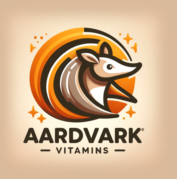Sports Research® Omega-3 Fish Oil 1250 - Triple Strength Fish Oil Supplement from Wild Alaska Pollock - MSC Certified Sustainable · Non-GMO · Soy Free - 90 Softgel Capsules
$27.95 (as of December 9, 2025 19:14 GMT +00:00 - More infoProduct prices and availability are accurate as of the date/time indicated and are subject to change. Any price and availability information displayed on [relevant Amazon Site(s), as applicable] at the time of purchase will apply to the purchase of this product.)Anticonvulsants, also known as antiepileptic drugs, are a diverse group of pharmaceuticals used primarily in the treatment of epileptic seizures. They are also increasingly being used in the treatment of bipolar disorder, since many seem to act as mood stabilizers, and for the treatment of neuropathic pain. The goal of an anticonvulsant is to suppress the rapid and excessive firing of neurons that start a seizure. Failing this, a good anticonvulsant could also prevent the spread of the seizure within the brain and offer protection against possible excitotoxic effects that may result in permanent brain damage.
However, it is vital to understand that anticonvulsants are not a one-size-fits-all solution, and what works for one patient may not work for another. The effectiveness of an anticonvulsant can depend on the type of seizures a patient is experiencing. Some drugs in this category are more effective against certain types of seizures than others. Additionally, the side effects associated with anticonvulsants can vary widely, and some drugs in this category can cause severe side effects, including skin rashes, liver dysfunction, and blood disorders.
The mechanism of action of anticonvulsants is not completely understood, but many appear to work by stabilizing the membranes of nerve cells and preventing the spread of seizures within the brain. Some anticonvulsants also appear to have an effect on neurotransmitters, which are chemicals that nerves use to communicate with each other. Despite their potential side effects, anticonvulsants have been a significant advancement in the treatment of neurological disorders, providing relief for many patients.
Some of the more commonly used generic anticonvulsant drugs include phenytoin, valproic acid, carbamazepine, and lamotrigine. Phenytoin is often used to control grand mal seizures and status epilepticus, while valproic acid is used for absence seizures and bipolar disorder. Carbamazepine is effective against partial seizures, and lamotrigine is used for partial and generalized seizures as well as for bipolar disorder. Each of these drugs has a unique profile in terms of its anticonvulsant properties, side effects, and interactions with other medications, making the choice of the right anticonvulsant a critical decision for both patients and their healthcare providers.



